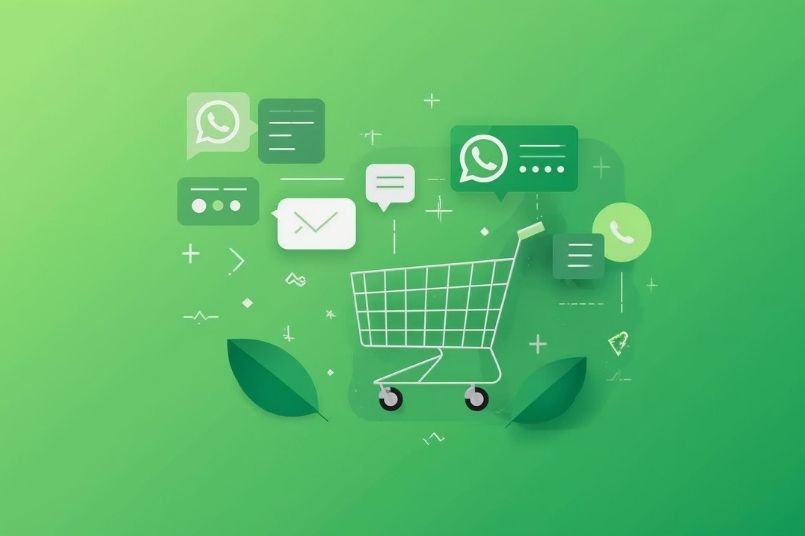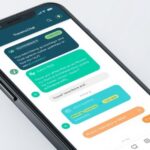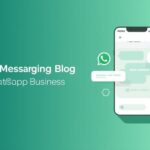WhatsApp Cart Recovery for Shopify: Playbook for Q4

The fourth quarter brings a surge of abandoned carts while every available margin becomes crucial for business success. A customer who shows strong buying intent will browse products but leave their cart when interrupted by holiday distractions until a prompt useful message guides them to complete their purchase. The real-time nature of WhatsApp combined with its personal touch and direct actionability makes it an ideal solution for this purpose. Shopify brands operating in the USA can use compliant opt-ins and conversational nudges to quickly recover lost revenue while minimizing acquisition waste and delivering an enhanced buying experience. This playbook provides a step-by-step guide to create a compliant WhatsApp cart recovery program for Q4 that starts with consent collection and continues through template optimization and incentive development and analytics analysis.
The first step requires you to create opt-in processes which must be both secure and easily accessible to customers. The checkout process and cart page and post-purchase subscription prompts should include WhatsApp opt-in options which explain the purpose of sending cart reminders and order updates to customers. The combination of Click-to-WhatsApp ads with “Save my cart” messaging enables businesses to obtain consent from users during their first message when using paid traffic campaigns. The objective involves creating a permission-based audience before peak traffic while following all U.S. privacy and platform standards. After obtaining consent from customers you should link your Shopify events to messaging trigger functions. The system should start an automated recovery sequence when customers leave their carts unpaid for more than 30 to 60 minutes during the fourth quarter of the year. The sequence should deliver brief relevant assistance instead of aggressive messages.
The first reminder should be human in nature while being specific and easy to follow. The reminder should specify the exact product or category which the customer abandoned and use brief language with direct action buttons such as “Resume checkout” or “View cart” to minimize mental effort. The reminder should include a product thumbnail for visual items while showing a summary of bundle or configurable item choices to help customers remember their previous selections. The first follow-up message should appear within the active browsing window to maintain a seamless experience instead of disrupting the user. The second reminder should be sent 12 to 24 hours after the first one when the shopper does not respond because many Q4 buyers evaluate their options during the night and a morning reminder can reach them at their decision point. The message should maintain a friendly approach while providing assistance for product sizing and shipping details and return procedures.
The use of incentives should be both controlled and purposeful. The first step should be to present a value-based message before using discounts for customers who have high-value orders or who return to the site or who receive messages in the later stages of the sequence to maintain profit margins. The presentation of incentives should be restricted to particular situations which include free shipping deadlines and time-sensitive discount codes and price protection for best-selling items to create a perception of valuable service delivery. The visibility of shipping details holds equal importance to product pricing information. The display of delivery time estimates in messages and on landing pages together with clear return policies will help customers feel more confident about their purchases. Stock alerts sent through WhatsApp help customers finalize their purchases when inventory levels are low thus preventing them from needing deep price reductions.
The protection of brand trust and compliance stands as the most important factor. Users should have an easy method to unsubscribe from messages while receiving minimal communication and all sensitive information should stay out of free text fields. The channel will stay useful when users receive messages during designated quiet hours and when message frequency remains controlled. The system should direct customers to live agents who possess cart context information for immediate question resolution. The majority of recovery situations depend on basic information about product fit and compatibility and promotional terms which can be solved through the same WhatsApp conversation to maintain customer momentum and minimize obstacles. The checkout process for higher-consideration categories should include guided steps for address verification and payment selection which redirect customers to Shopify for their final confirmation.
The implementation of measurement systems transforms this approach into a complete program. The tracking of opt-in growth and consent sources will help you determine which entry points generate the highest number of recoveries throughout Q4. The best send timing for recovery messages can be determined by analyzing click-through rates and checkout completion rates across different templates and time intervals (45 minutes vs. 2 hours after cart abandonment). The incremental value of WhatsApp reminders should be measured by comparing the performance of customers who receive both email and WhatsApp reminders to those who receive only email. The analysis of refund rates and discount levels and profit margins will help determine if revenue recovery through recovery efforts comes at a cost to profitability. The system should segment customers based on their Average Order Value (AOV) and product categories and between new and repeat buyers for scaling purposes. The recovery process for high-AOV carts requires agent assistance or longer live support hours but low-AOV carts need simple one-click recovery methods. The first message to returning buyers should acknowledge their status while providing a direct path to checkout because they value fast and easy processes over promotional offers.
The final step involves creating prebuilt variants for peak days. Create three reminder templates which include a neutral version and shipping-deadline and incentive-based versions together with brief responses for typical customer complaints about delayed delivery and incorrect sizes and promotional code non-applications. The system should have daily frequency limits and backup messaging options for when a message fails to deliver (such as Wi-Fi retries or alternative versions with reduced content). The acquired knowledge from holiday periods should be integrated into automated marketing systems that operate throughout the year. The most successful systems use Q4 data to optimize copy performance and delivery timing and customer segmentation which results in continuous improvement of recovery rates and customer satisfaction and retention levels throughout the year.
FAQs
Is WhatsApp cart recovery compliant in the USA?
Yes, when consent is explicit, the purpose is clearly stated, opt‑out is honored in every message, and customer data is handled according to privacy best practices. Use approved message templates, frequency caps, and clear branding to maintain trust.
How many reminders should be sent?
Two messages typically balance performance and respect: one within 30–60 minutes and a second 12–24 hours later. Add a third only for high‑value carts or when a shipping deadline is imminent, and always provide an easy opt‑out.
Should discounts be used in the first message?
Not by default. Start with a value‑based reminder and deploy incentives selectively based on cart value, inventory position, or buyer segment to protect margins while maximizing completions.What KPIs should be tracked?
Monitor opt‑in rate, click‑through, recovery rate, incremental lift versus email‑only, revenue and margin contribution, and post‑purchase outcomes like refund rate and repeat purchase within 30–60 days.






Review WhatsApp Cart Recovery for Shopify: Playbook for Q4.